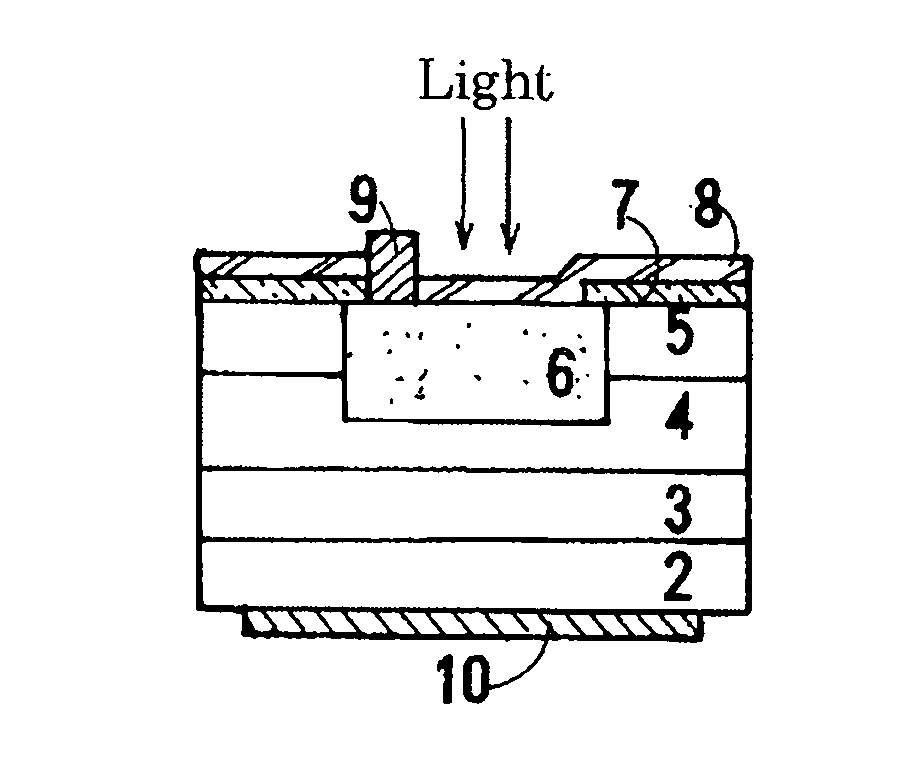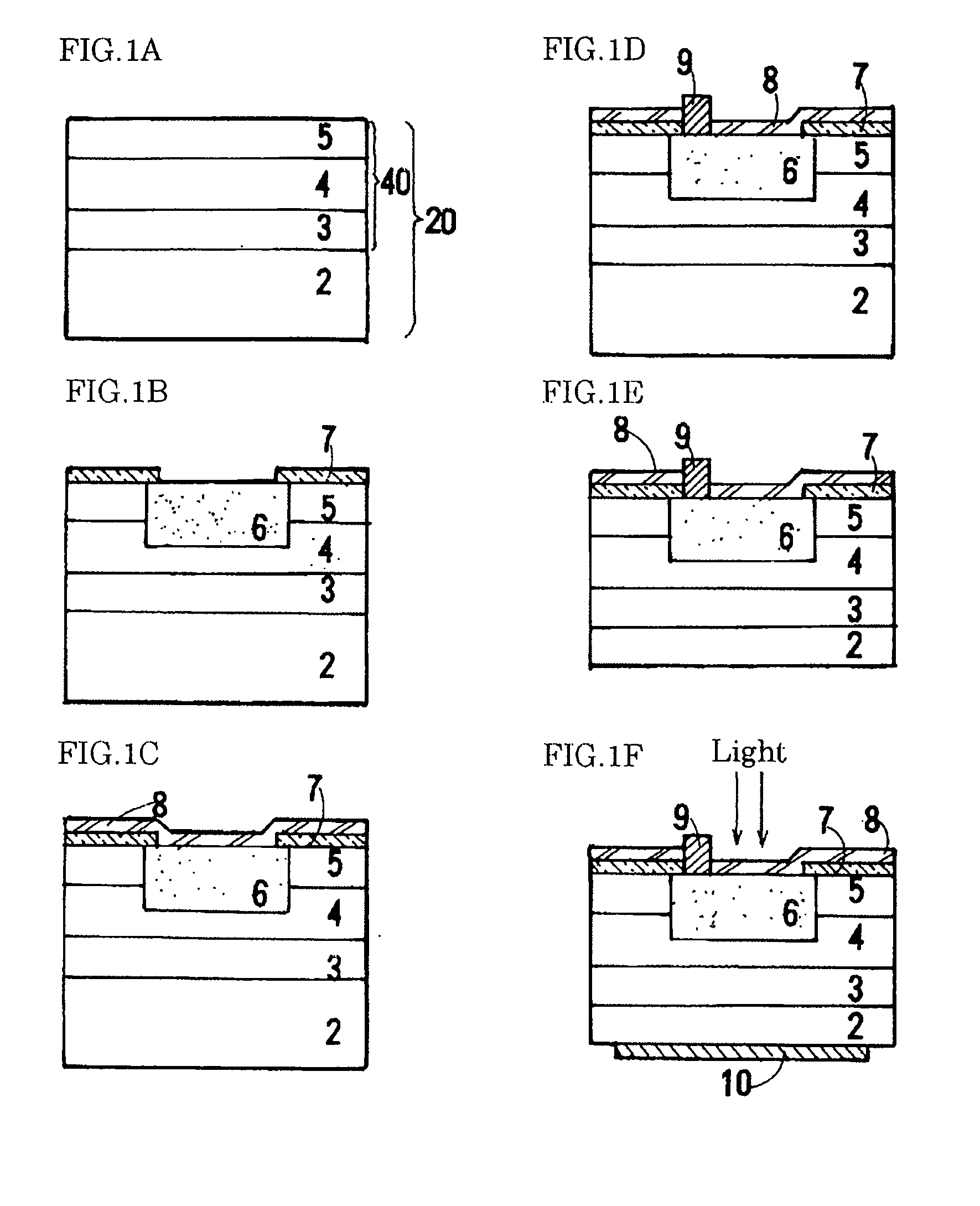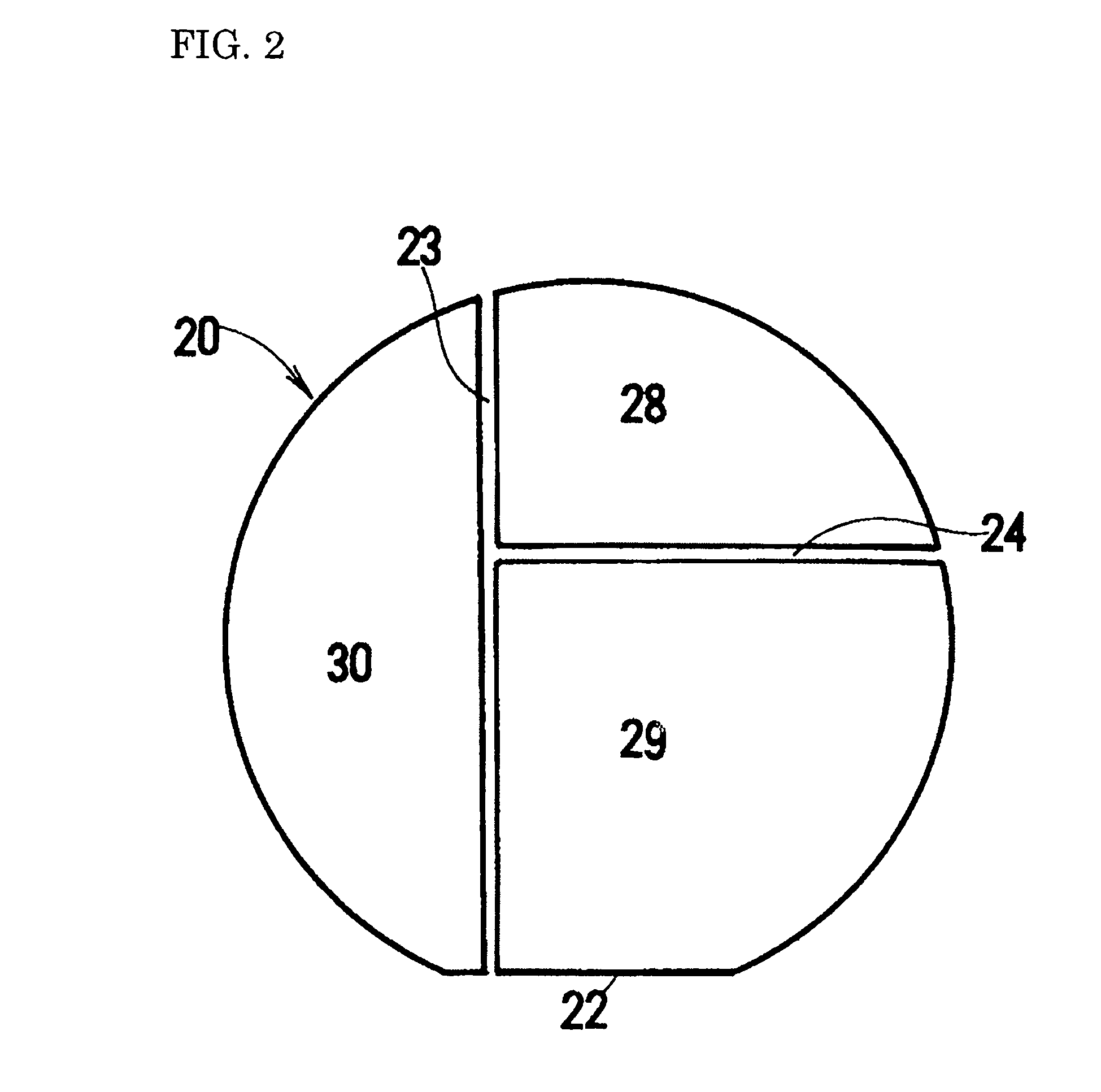Manufacturing method of electronic element
- Summary
- Abstract
- Description
- Claims
- Application Information
AI Technical Summary
Benefits of technology
Problems solved by technology
Method used
Image
Examples
first embodiment
[0050]The gist of the present invention is to remove a circumferential portion of an epitaxial wafer including compound semiconductor thin films epitaxially grown on an InP or GaAs substrate. As a result, an anomalously grown portion which is an elevated portion in the circumferential portion can be completely removed, and thus the wafer is little broken in subsequent processing steps (wafer process).
[0051]In order to selectively remove only the circumferential portions of the epitaxial layers, the entire surface of the epitaxial wafer is masked and covered with a resist, and a mask is formed by development so as to cover a central portion excluding only the circumferential portion of the resist. Then, the epitaxial layers are removed using a liquid etchant or RIE. The epitaxial layers are composed of InP and InGaAs, and thus when the etchant is used, it is necessary to change the etchant because suitable etchants for the respective epitaxial layers are different. Namely, HCl is use...
PUM
 Login to View More
Login to View More Abstract
Description
Claims
Application Information
 Login to View More
Login to View More - R&D
- Intellectual Property
- Life Sciences
- Materials
- Tech Scout
- Unparalleled Data Quality
- Higher Quality Content
- 60% Fewer Hallucinations
Browse by: Latest US Patents, China's latest patents, Technical Efficacy Thesaurus, Application Domain, Technology Topic, Popular Technical Reports.
© 2025 PatSnap. All rights reserved.Legal|Privacy policy|Modern Slavery Act Transparency Statement|Sitemap|About US| Contact US: help@patsnap.com



